Goddess Worship
 In the Ha Qabala, the female figures of
Ashtoreth and Anath
(Being wife and daughter of Jehovah) became merged into a single
spiritual entity, an overall consort known as Ashtoreth .
The word was extracted from Sh'kinah, a Hebrew abstract
verb meaning 'to dwell', and by the late 1st century AD the
Shekina (Ashtoreth-Anath) had become the mother-goddess
of the Jews, as given in the Targum Onkelos, an Aramaic
Bible which appeared soon after the lifetime of Jesus. Rabbi
Yehoshua of Siknin wrote in the 1st century that, 'As soon as
the Tabernacle was erected (Exodus 36) the Shekina
decended and dwelt amoung them (the Children of Israel)'. The
Shekhina was deemed to be the spouse and female representative
of God upon the Earth, her original dwelling place was the
tabernacle(The Mishkan, and her later abode was Solomon's
Temple of Ashtoreth in Jerusalem.
In the Ha Qabala, the female figures of
Ashtoreth and Anath
(Being wife and daughter of Jehovah) became merged into a single
spiritual entity, an overall consort known as Ashtoreth .
The word was extracted from Sh'kinah, a Hebrew abstract
verb meaning 'to dwell', and by the late 1st century AD the
Shekina (Ashtoreth-Anath) had become the mother-goddess
of the Jews, as given in the Targum Onkelos, an Aramaic
Bible which appeared soon after the lifetime of Jesus. Rabbi
Yehoshua of Siknin wrote in the 1st century that, 'As soon as
the Tabernacle was erected (Exodus 36) the Shekina
decended and dwelt amoung them (the Children of Israel)'. The
Shekhina was deemed to be the spouse and female representative
of God upon the Earth, her original dwelling place was the
tabernacle(The Mishkan, and her later abode was Solomon's
Temple of Ashtoreth in Jerusalem.
In his day, Solomon refused to stop using Egyptian symbols because we know that some of the ancient hieroglyphics of Seqenenre and his God's were still around and continue in use today. This included the worship of the sacred goddess. Some of the meanings however have been restructured over time and have lost their origional meaning, such as MA AT. But the female represented more that that. She represented harmony and balance and the natural order of all in nature.
The scriptures say, "So Solomon did what was evil in the sight of the Lord, and did not wholly follow the Lord, as David his father had done. But the Lord was Jehovah, and Jehovah hated women. Solomon paid no attention to the masses and continued his worship of Ishtar.
Then Solomon built a high place for Chemosh the abomination of Moab, and for Molech the abomination of the Ammonites, on the mountain east of Jerusalem. And so he did for all his foreign wives, who burned incense and sacrificed to their gods". ..but was this really evil or was he refering to the Egyptian culture that brought the mysteries to 'light'?
The KJ bible says, 'Solomon became corrupt. He began worshiping other gods'. But if he had been initiated into the elite group of Hiram, and became a Grand Master himself, why would he do this?. One theory is this; he worshipped the false god Baal. King Solomon it is said, was 'initiated' into the mysteries in the Great Pyramid of Egypt. Others say he wasn't allowed in it. Possibly because of this and the secret knowledge that was gained in the initiation process and other teachings which originated in Egypt, Solomon continued his spiritual relationship with the Goddess Ishtar, also called Isis and Astarte, Diana, Hecate, Demeter, Kali and Inanna. Each name represents a different culture.
KJB - "Yet Solomon failed to heed the counsel of God and of his father David. He soon had accumulated horses and chariots (disregarding the admonition of Samuel and the Law of Moses), and in the course of time he excelled his father's love of women by accumulating "700 wives and 300 concubines." One of the great understatements of the Bible attributes Solomon's downfall to the influence of his foreign wives".
 Now King Solomon loved many foreign women: the daughter
of Pharaoh, and Moabite, Ammonite, Edomite, Sidonian, and Hittite
women, from the nations concerning which the Lord had said to
the people of Israel, "You shall not enter into marriage with
them, neither shall they with you, for surely they will turn
away your heart after their gods; Solomon clung to these in love.
He had seven hundred wives, princesses, and three hundred
concubines; and his wives turned away his heart. For when Solomon
was old his wives turned away his heart after other gods- and
his heart was not wholly true to the Lord his God, as was the
heart of David his father. For Solomon went after Ashtoreth
(Ishtar ) the goddess of the Sidonians, and after Milcom the
abomination of the Ammonites.
Now King Solomon loved many foreign women: the daughter
of Pharaoh, and Moabite, Ammonite, Edomite, Sidonian, and Hittite
women, from the nations concerning which the Lord had said to
the people of Israel, "You shall not enter into marriage with
them, neither shall they with you, for surely they will turn
away your heart after their gods; Solomon clung to these in love.
He had seven hundred wives, princesses, and three hundred
concubines; and his wives turned away his heart. For when Solomon
was old his wives turned away his heart after other gods- and
his heart was not wholly true to the Lord his God, as was the
heart of David his father. For Solomon went after Ashtoreth
(Ishtar ) the goddess of the Sidonians, and after Milcom the
abomination of the Ammonites.
The Holy of Holies in Solomon’s Temple represented the
womb of ASHTORETH/ASHERAH, who was also the Phoenician goddess
of love and fruitfulness, Astarte in Greece and Rome, Atar
Gatis (a mermaid) in Syria. Ashtoreth was identified with
Greek goddesses Hecate (witchcraft) and Selene (moon = Roman
Luna) - often associated with each other; Artemis (wild nature,
harvest, hunting as Agrotora, wild animals especially bears as
Kalliste, fishermen as Britomartis (Sweet Maiden, moon goddess,
snake-mermaid)/Diktynna, (who may be one person or lovers)
childbirth, chastity, youth and young women = Roman Diana, and
Aphrodite (love/beauty = Roman Venus). Selene (who loved
Endymion) had a sister Eos (Roman Aurora) goddess of dawn - both
were daughters of Theia. The Phoenician goddess of the moon was
Tanit. Creator goddesses have always been associated
with the moon, for obvious reasons even to its control of tides
and water - and horses too especially to the Celts, because
of their moon shaped hoof prints. More on Gods and Goddesses ..
The worship of women throughout the ages
More on Solomons Temple
Great Builders
 The Shekhina was a portrayal of the Holy Spirit -
the epitone of Wisdom (in Greek, Sophia, and in Hebrew, Hochmah)
She represented Jehovah, but was opposed to him in matters of
retribution, as related by the doctrines of Solomon in the book
of Proverbs- for example (24:29) 'Say not I will do unto the
man as he hath done to me. I will render to the man according
to his work'. This is contrary to the 'life for a life', eye for
an eye, tooth for a tooth' teaching of Jehovah ( Exodus 21:
23-24) - the same vengeful teaching of Jehovah expounded by
Enlil in Ancient Sumner, which was so despised by his sister
Nin-khursag, the Shekhina archetype.
The Shekhina was a portrayal of the Holy Spirit -
the epitone of Wisdom (in Greek, Sophia, and in Hebrew, Hochmah)
She represented Jehovah, but was opposed to him in matters of
retribution, as related by the doctrines of Solomon in the book
of Proverbs- for example (24:29) 'Say not I will do unto the
man as he hath done to me. I will render to the man according
to his work'. This is contrary to the 'life for a life', eye for
an eye, tooth for a tooth' teaching of Jehovah ( Exodus 21:
23-24) - the same vengeful teaching of Jehovah expounded by
Enlil in Ancient Sumner, which was so despised by his sister
Nin-khursag, the Shekhina archetype.
This goddess and many others were expelled from the Jewish religion at a time when the High Priests decided that women should be subservant and 'obey' men. As we have already discussed, the goddess is the all important link to life. "The giver of life". This began with Eve. The Romans picked up this ball and carried into the new christian religion with zeel and it also spread to Islam where women are beaten and must serve their 'master'.
Sophia/Shekhina is God's wife. Without her there would be
no 'Son'. If we revere God at all we must also revere his wife,
the Holy spirit. If we revere the Son, we must revere his wife
even more because she is the Holy Grail. If you doubt this we
recommend the book The Di Vinci Code, the number 2 best
seller at Barnes and Nobel as of this update-2004. Our pages on Jesus
and Mary Magdalene explain more. Especially
Jesus' Secret
When you see the painting by Learnado Di Vinci, look at
the V created by Jesus and Mary as they sit together "joined at the hip"
in the middle of the painting. A recent TV documentary confirms
this secret coded in the painting by Di Vinci who was a member of
the super secret
Priory of Sion
 Exerpt from The Di Vinci Code: The Catholic inquisition published the book
that arguably could be called the most blood-soaked
publication in human history. Malleus Maleficarum - or
'The Witches' Hammer-indoctrinated the world to 'the dangers
of free thinking women' and instructed the clergy how to
locate, torture, and destroy them. Those deemed "witches" by
the Church included all female scholars, priestesses, gypsies,
mystics, nature lovers, herb gatherers, and any woman attuned
to the natural world. Midwives also were killed for their
heritical practice of using medical knowledge to ease the pain
of child birth-a suffering the church claimed, that was God's
rightfull punishment for Eve's origional sin. During three
hundred years of witch hunts, the church burned at the stake
an astonishing five million women.
Exerpt from The Di Vinci Code: The Catholic inquisition published the book
that arguably could be called the most blood-soaked
publication in human history. Malleus Maleficarum - or
'The Witches' Hammer-indoctrinated the world to 'the dangers
of free thinking women' and instructed the clergy how to
locate, torture, and destroy them. Those deemed "witches" by
the Church included all female scholars, priestesses, gypsies,
mystics, nature lovers, herb gatherers, and any woman attuned
to the natural world. Midwives also were killed for their
heritical practice of using medical knowledge to ease the pain
of child birth-a suffering the church claimed, that was God's
rightfull punishment for Eve's origional sin. During three
hundred years of witch hunts, the church burned at the stake
an astonishing five million women. The propaganda and bloodshed had worked. Today's world was living proof.
“The Roman Church maintains that it was not so much the seed of the woman, as the woman herself, that was to bruise the head of the serpent. In defiance of all grammar, she renders the Divine denunciation against the serpent thus: ‘She shall bruise thy head, and though shalt bruise her heel.’ The same was held by the ancient Babylonians, and symbolically represented in their temples. In the uppermost storey of the tower of Babel, or temple of Belus, Diodorus Siculus tells us there stood three images of the great divinities of Babylon; and one of these was a woman grasping a serpent’s head. (Diodorus, Bibliotheca, lib. ii. p. 70).
“Among the Greeks the same thing was symbolised; for Diana, whose real character was originally the same as that of the great Babylonian goddess, was represented as bearing in one of her hands a serpent deprived of its head. (See Smith’s Classical Dictionary, p. 320). As time wore away, and the facts of Semiramis’s history became obscured, her son’s birth was boldly declared to be miraculous: and therefore was called ‘Alma Mater,’ ‘the Virgin Mother.’” Hislop, A. (1959:75, 76).
 Kali, the Hindu Triple Goddess of creation, preservation, and destruction. She is the symbolic
Goddess of birth and death, womb and tomb. Kali represents the
Mystery of life and death, the joys, the sorrows; the awesome
reality.
Kali, the Hindu Triple Goddess of creation, preservation, and destruction. She is the symbolic
Goddess of birth and death, womb and tomb. Kali represents the
Mystery of life and death, the joys, the sorrows; the awesome
reality.
 Reference has been made in the KJB
that who ever shall curse the "Holy Ghost shall NOT be Forgiven."
The Holy Ghost is and always has been the 'Mother of Mankind'.
Reference has been made in the KJB
that who ever shall curse the "Holy Ghost shall NOT be Forgiven."
The Holy Ghost is and always has been the 'Mother of Mankind'.
“That the birth of the Great Deliverer was to be miraculous, was widely known long before the Christian era. For centuries, some say for thousands of years before that event, the Buddhist priests had a tradition that a Virgin was to bring forth a child to bless the world. (Asiatic Researches, vol. x. p. 27). That this tradition came from no Popish or Christian source, is evident from the surprise felt and expressed by the Jesuit missionaries, when they first entered Thibet and China, and not only found a mother and a child worshipped as at home, but that mother worshipped under a character exactly corresponding with that of their own Madonna, ‘Virgo Deipara,’ ‘the Virgin mother of God,’ See Sir J. F. Davis’s China, vol. ii. p. 56, and Lafitan, who says that the accounts sent home by the Popish missionaries bore that the sacred books of the Chinese spoken not merely of a Holy Mother, but of a Virgin Mother (vol. i. p. 235, Note).
“The primeval promise that the ‘seed of the woman should bruise the serpent’s head,’ naturally suggested the idea of a miraculous birth. Priestcraft and human presumption set themselves wickedly to anticipate the fulfilment of that promise; and the Babylonian queen seems to have been the first to whom that honour was given. The highest titles were accordingly bestowed upon her. She was called the ‘queen of heaven.’ (Jeremiah xliv. 17, 18, 19, 25).
“When Ashta, or ‘the woman,’ came to be called the ‘queen of heaven,’ the name ‘woman’ became the highest title of honour applied to a female. This accounts for what we find so common among the ancient nations of the East, that queens and the most exalted personages were addressed by the name of ‘woman.’ ‘Woman’ is not a complimentary title in our language; but formerly it had been applied by our ancestors in the very same way as among the Orientals; for our word ‘Queen’ is derived from Cwino, which in the ancient Gothic just signified a woman.” Hislop, A. (1959:76, 77).
“The dove, the chosen symbol of this deified queen, is commonly represented with an olive branch in her mouth, as she herself in her human form also is seen bearing the olive branch in her hand; and from this form of representing her, it is highly probable that she has derived the name by which she is commonly known, for ‘Z’emir-amit’ means ‘The branch-bearer.’ From Ze, ‘the’ or ‘that,’ emir, ‘branch,’ and amit, ‘bearer,’ in the feminine. – Hesychius says that Semiramis is a name for a ‘wild pigeon.’ Hislop, A. (1959:79).
“The names of blasphemy bestowed by the Papacy on Mary Magdalen have not one shadow of foundation in the Bible, but are all to be found in the Babylonian idolatry. Yea, the very features and complexions of the Roman and Babylonian Madonnas are the same.” (1959:85).
 As the perfect image of woman for a misogynist society, but
perhaps also for reasons that may, unconsciously at least, have to
do with her ancient associations, Mary Magdalen rose in prominence
and in the later Middle Ages, beginning in the 12th century, there
developed a widespread cult of Mary Magdalen, which at its height
in the 14th century rivalled that of the Virgin.
As the perfect image of woman for a misogynist society, but
perhaps also for reasons that may, unconsciously at least, have to
do with her ancient associations, Mary Magdalen rose in prominence
and in the later Middle Ages, beginning in the 12th century, there
developed a widespread cult of Mary Magdalen, which at its height
in the 14th century rivalled that of the Virgin.
Her feast day, July 22, was listed in all Roman Catholic missals, an Office of Saint Mary Magdalen was included in the Roman Breviary, liturgies and hymns were composed in her honour, religious orders and churches were founded in her name.
All this attention, however, was focused not so much on her significance as the "apostle of the apostles," the true bearer of Christ's wisdom and first witness to his resurrection, but on her fictional life, especially that as recounted by Jacobus de Voragine in the Golden Legend in which she was extolled chiefly as an exemplary penitent.
In the 15th century, however, she begins to appear more frequently as a fashionably dressed young woman, though no doubt in the eye of the period, also as a seductress, a Renaissance femme fatale (see Mary Magdalen in Renaissance and Later Art. see Magdalen Art
 The male and female are also represented by the square and
compass and the six pointed star of David. The compass is
the male and the Square is the female. Also the chalice or cup
represents the female and is also known as the Holy Grail.
The grail is also represented by the Rose, originally a
five-petal rose in particular.
The male and female are also represented by the square and
compass and the six pointed star of David. The compass is
the male and the Square is the female. Also the chalice or cup
represents the female and is also known as the Holy Grail.
The grail is also represented by the Rose, originally a
five-petal rose in particular.
The cross (called the Rosi-crucis (Greco-Roman), from rosi = dew of waters, and crucis = cup or chalice) is a sign of enlightenment and on this account the sacred Rosi-crucis (the Dew Cup, or Cup of the Waters) was the original mark of foundation of the kingly bloodline. The cup, is identified in Bloodline of the Holy Grail, Gardner, L., Bloodline of the Holy Grail, pp. 247-50., was itself emblematic of the womb, representing the maternal aspect of kingship, whence the Blood Royal (the waters of enlightenment) flowed. It was therefore deemed that the Mesopotamian kings were individually married to the Mother Goddess.
 The rose was singled out by God to be
the flower of the Christ Child... the rose of Sharon.
Its' petals as soft as the skin of the newborn.
Its' bark so very slick that water and sins
are repelled instantly, preserving its'
virginal exterior, as was the God
who became man.
The rose was singled out by God to be
the flower of the Christ Child... the rose of Sharon.
Its' petals as soft as the skin of the newborn.
Its' bark so very slick that water and sins
are repelled instantly, preserving its'
virginal exterior, as was the God
who became man. In its' bud form so tight that evil could not penetrate the precious petals.
As it begins its' opening ball the petals unfold to reveal the riches of its' hidden beauty.
 I am a rose of Sharon, a lily of the valleys.
Like a lily among thorns is my darling among the maidens.
Like an apple tree among the trees of the forest
is my lover among the young men.
I delight to sit in his shade,
and his fruit is sweet to my taste.
He has taken me to the banquet hall,
and his banner over me is love.
Strengthen me with raisins, refresh me with apples,
for I am faint with love.
His left arm is under my head,
and his right arm embraces me.
Daughters of Jerusalem, I charge you by the gazelles
and by the does of the field:
Do not arouse or awaken love until it so desires.
I am a rose of Sharon, a lily of the valleys.
Like a lily among thorns is my darling among the maidens.
Like an apple tree among the trees of the forest
is my lover among the young men.
I delight to sit in his shade,
and his fruit is sweet to my taste.
He has taken me to the banquet hall,
and his banner over me is love.
Strengthen me with raisins, refresh me with apples,
for I am faint with love.
His left arm is under my head,
and his right arm embraces me.
Daughters of Jerusalem, I charge you by the gazelles
and by the does of the field:
Do not arouse or awaken love until it so desires.Song of Songs 2:1-7
Ishtar; Goddess of Fertility and Reproduction. Originally
worshiped from 1150 to 586 BC, in temples later given to Yahweh.
For a time they were worshiped side by side.
She was venerated in the royal household of Solomon and was part
of temple worship during the time of Jezebel -- who was maligned
by Levite prophets of the Bible.
Astarte; Assyrian "Queen of Heaven". She was the goddess of fertility, love, and sexuality, and a guardian of ships/sailors, as well as the patroness of law. Her emblem is the acacia tree, which produces red and white flowers, her favorite colors. She is usually pictured standing on the back of a lioness, with a lotus and mirror in one hand and two snakes in the other.
 It
may be Ishtar with her duality of sexuality and chastity who
provided the model for the Christian figure: the Virgin Mary.
Whether this is the case or not does not diminish the importance
of the goddess Ishtar.
It
may be Ishtar with her duality of sexuality and chastity who
provided the model for the Christian figure: the Virgin Mary.
Whether this is the case or not does not diminish the importance
of the goddess Ishtar.
Ishtar, chief goddess of the Babylonians and the Assyrians and the counterpart of Astarte, a Phoenician goddess. The name appeared in different forms in every part of the ancient Semitic world; thus it was Athtar in Arabia, Astar in Abyssinia (now Ethiopia), and Ashtart in Canaan and Israel. The sex of the divinity also varied: Athtar and Astar were male deities. Ishtar of Erech (in Babylonia) was a goddess worshiped in connection with the evening star, but Ishtar of Akkad (also in Babylonia) was a god identified with the morning star.
As a goddess, Ishtar was the Great Mother, the
goddess of fertility and the queen of heaven. On the other hand,
her character had destructive attributes; she was considered,
especially by the Assyrians, a goddess of hunting and war and
was depicted with sword, bow, and quiver of arrows. Among the
Babylonians, Ishtar was distinctly the mother goddess and was
portrayed either naked and with prominent breasts or as a mother
with a child at her breast. As goddess of love she brought
destruction to many of her lovers, of whom the most notable was
her consort Tammuz, the Babylonian counterpart of Adonis...
from "Ishtar," Microsoft® Encarta® Online
Encyclopedia 2001.http://encarta.msn.com © 1997-2001 Microsoft..
.
and see.Ishtar
Ancient Goddess of Love and War
Isis, the greatest goddess of all time.
To modern students of goddess history, this story provides a glimpse of a man holding all the intellectual benefits of the temple, struggling against a multitude for whom the possession of such knowledge was a sign of a practitioner of witchcraft (only according to the church). The hero is called Lucius, and although the events described in the story are wildly fantastic, there is clearly autobiographical content. The plot: Young Lucius meddles with the wrong witches, and is turned into an ass as a result. He then wanders the countryside, being mistreated by one group of captors after another.
Lucius comes at midnight to a moonlit shore, where he has a personal meeting with the goddess Isis. This passage is heavy with meaning: the poet Robert Graves was so taken by this text that he undertook his own translation from the Latin, and made this scene, a poet's description of the goddess.
 Isis restores Lucius to his human shape, and there follows a
description of an Isis ceremony which is our best source of
detail about them. The fact that this document was present in
the libraries of Christian scholars may have provided the
Church with the material from which they constructed their
slanders against witches and sorcerers: the scene in which
Lucius speaks with Isis can be twisted into the
classic "selling your soul to the devil" contract...
Isis restores Lucius to his human shape, and there follows a
description of an Isis ceremony which is our best source of
detail about them. The fact that this document was present in
the libraries of Christian scholars may have provided the
Church with the material from which they constructed their
slanders against witches and sorcerers: the scene in which
Lucius speaks with Isis can be twisted into the
classic "selling your soul to the devil" contract...
"Know you this of certain, that the residue of your life until the hour of death shall be bound and subject to me! And think it not an injury to be always serviceable towards me, since as by my mean and benefit you shall live glorious by my guide and protection, and when you descend to Hell, where you shall see me shine in that subterene place, shining (as you see me now) in the darkness of Acheron, and reigning in the deep profundity of Styx, you shall worship me, as one that has been favourable to you, and if I perceive that you art obedient to my commandment, addict to my religion, and merit my divine grace, know you, that I will prolong your days above the time that the fates have appointed, and the celestial planets ordained".
"When the divine image had spoken these words, she vanished away! By and by when I awoke, I arose, having the members of my body mixed with fear, joy and sweat, and marvelled at the clear presence of the puissant goddess, and being sprinkled with the water of the sea, I recounted orderly her admonition and divine commandments."
from: The Temple of Isis on the Nile Metamorphoses or The Golden Ass by pagan poet and philosopher Lucius Apuleius (200AD, Adlington's translation from the latin, 1566 AD)
The temple remains of Isis have been found of the coast in Egypt. See the link above.
Isis; Sometimes Isitis, which means Earth or corn-bearing Land. She is the "mother of all creation". A daughter of Geb and Nut, she was the faithful wife of her brother Osiris. She became universally worshipped, is associated with love, motherhood, marital devotion, healing, eternal life, and the casting of magical spells and charms. Isis is the goddess of day, while her twin sister, Nephthys, is the goddess of night. Her sacred symbol is an amulet called the tyet.
It may soon emerge that the "burning of the Library of Alexandria" did in fact include "the sacking of the Temple of Isis". Included in the Almagest are the star charts of Ptolemy, which are the basis for all of modern astronomy, providing the original names of the constellations; a map of the zodiac constituting a calendar, and a uniform system for measuring and recording the angle (position) and brightness of individual stars with great accuracy. Ptolemy was also a philosopher who pondered the very question modern scientists might wish to ask of him: whether his work was an investigation of pure physics, or of observation of the divine. Ptolemy concluded, as did Pythagorus, that mathematics was the divine revealed.
The fundamentals of modern science spring directly from the goddess temples. The process of proof from established and agreed assumptions is there in Euclid. The process of publication and peer review is there. It is surprising therefore that modern science pays little respect to the temples and the theology of the ancients, dismissing it as the source of astrology, while ignoring their role as the font of medicine; mathematics, literature, music and man's sense of being a natural part of a single awesome beautiful creation.
 “The disk, and particularly the circle, were the well-known
symbols of the Sun-divinity, and figured largely in the
symbolism of the East. With the circle or the disk the head
of the Sun-divinity was encompassed. The same was the case in
Pagan Rome. Apollo, as the child of the Sun, was often thus
represented. The goddesses that claimed kindred with the Sun
were equally entitled to be adorned with the nimbus or luminous
circle. We give from Pompeii a representation of
Circe,
‘the daughter of the Sun’ with her head
surrounded with a circle, in the very same way as the head of
the Roman Madonna is at this day surrounded. Let any one compare
the nimbus around the head of Circe, with that around the head
of the Popish Virgin, and he will see how exactly they
correspond.
“The disk, and particularly the circle, were the well-known
symbols of the Sun-divinity, and figured largely in the
symbolism of the East. With the circle or the disk the head
of the Sun-divinity was encompassed. The same was the case in
Pagan Rome. Apollo, as the child of the Sun, was often thus
represented. The goddesses that claimed kindred with the Sun
were equally entitled to be adorned with the nimbus or luminous
circle. We give from Pompeii a representation of
Circe,
‘the daughter of the Sun’ with her head
surrounded with a circle, in the very same way as the head of
the Roman Madonna is at this day surrounded. Let any one compare
the nimbus around the head of Circe, with that around the head
of the Popish Virgin, and he will see how exactly they
correspond.
 Worship of mother and child spread from Babylon to the
ends of the earth, but were called different names in the
languages of the various counties where their worship appeared.
The ancient Germans worshipped the virgin HERTHA with the child
in the arms of his mother. The Scandinavians called her DISA
pictured with her child. In Egypt, the mother and her child were
worshiped as ISIS with the infant OSIRIS or HORUS seated on his
mother's lap. In India, the mother and child were called DEVAKI
and KRISHNA, and also ISI and ISWARA as they are worshiped to
this day. In Asia, they were known as CYBELE and DEOIUS; in
pagan Rome, as FORTUNA and JUPITER-PUER, or the boy JUPITER;
in Greece, as CERES, the great mother with babe at her breast,
or as IRENE, the goddess of peace, with the boy PLUTUS in her
arms. Even in Tibet, China, and Japan, Jesuit missionaries were
astonished to find the Roman counterpart of MADONNA and child.
SHING MOO, the holy mother in China was portrayed with a child
in her arms and a glory around her.
Worship of mother and child spread from Babylon to the
ends of the earth, but were called different names in the
languages of the various counties where their worship appeared.
The ancient Germans worshipped the virgin HERTHA with the child
in the arms of his mother. The Scandinavians called her DISA
pictured with her child. In Egypt, the mother and her child were
worshiped as ISIS with the infant OSIRIS or HORUS seated on his
mother's lap. In India, the mother and child were called DEVAKI
and KRISHNA, and also ISI and ISWARA as they are worshiped to
this day. In Asia, they were known as CYBELE and DEOIUS; in
pagan Rome, as FORTUNA and JUPITER-PUER, or the boy JUPITER;
in Greece, as CERES, the great mother with babe at her breast,
or as IRENE, the goddess of peace, with the boy PLUTUS in her
arms. Even in Tibet, China, and Japan, Jesuit missionaries were
astonished to find the Roman counterpart of MADONNA and child.
SHING MOO, the holy mother in China was portrayed with a child
in her arms and a glory around her.
Semiramis was worshiped in Ephesus as the pagan fertility goddess DIANA who represented the generative powers of nature. She was referred to as a fertility goddess because she mothered all the numerous pagan gods representing the god-incarnate Nimrod ( their opinion but there is some truth to this description. Nimrod was called a pagan because he taught the very same things as the Gnostics. He was an incarnate just like Jesus. Semiramis is another representation of Sophia.) Diana was pictured with numerous teats so that she could nurse all the pagan gods, and she wore a tower-shaped crown symbolizing the Babylonian tower of Babel.
“Now, could any one possibly believe that all this
coincidence could be accidental? Of course, if the Madonna had
ever so exactly resembled the Virgin Mary, that would never
have excused idolatry. But when it is evident that the goddess
enshrined in the Papal Church for the supreme worship of its
votaries, is that very Babylonian queen who set up Nimrod or
Ninus ‘the Son,’ as the rival of Christ, and who in her own
person was the incarnation of every kind of licentiousness,
how dark a character does that stamp on the Roman idolatry.
What will it avail to mitigate the heinous character of that
idolatry, to say that the child she holds forth to adoration
is called by the name of Jesus?
..from The Mother of the Child
As we stated earlier, a Holy Child must be born of a
virgin. The pagan mothers are not whores, they are containers
of 'light'. It is entirely possible that every one of these
cultures actually had a 'savior' born of a virgin to teach them
the very same things Jesus taught his followers.
That means NONE of these are EVIL, but they are all, every
one just like Jesus. They just have different names.
Nimrod is not the rival of Christ and was never called 'Baal'
to our knowledge. Just like Jesus, Nimrod was a threat to the Baal
worshipers so they did everything they could to discredit him.
Nimrod like Jesus was highly educated but his advanced knowledge
made him appear to be an occultist or magician.
We think he knew preciously who Baal was and who was worshiping
him!!
The catholics revere and worship the virgin, Mary, but it is really Eve or Sophia who gave men life. Is Mary really a worshiped 'copy' of Sophia? We think she is because of this ancient tradition and a very old religious sect who probably knew the real story but wanted it to be a story only their people would associate with. They changed her cloths and covered her head and gave her a 'Hebrew look'. All the other cultures did the same thing. In doing so, they did incorporate many pagan traditions into their particular priesthood.
Each culture developed it's own version of Sophia, her Son and God. This leads us to another 'twist' that is commonly unknown to todays religious orders. A woman was left in control of the 'priesthood' of the true followers of Christ. When the Roman controllers took over, her part in the life of Jesus was downplayed and has been lied about for centuries. The ancient religion of the Osiris cult was blended with the new and was changed to benefit those in control. You will find that christians somehow don't acknowledge their sorted past. The proverabial 'dirty linen in the closet'. NOTE; We are not condeming true christianity, only the changes made by men to destroy the true teachings.
Modern day Christianity, which has little to do with the teachings of Jesus the Nazarene, rules its "flock" as a slave master, through fear of hell and eternal damnation if one "dies in sin", employing herd psychology, whereas Thelema teaches that we are all free and there is no eternal damnation--simply results that we will experience dependent upon our own actions.
 With the Egyptain legend,
we see an exact recreation of the story of the birth of the man we
call Jesus. The story we are so familiar with from the KJB
is patterned after the birth of Horus.
The story of the virgin birth, Eve and her son Seth, ect., is the same.
It is all absolutely true from indications in the Nag Hammidi.
If you have been
to Shepherd Kings
The prediction of the 'child' came true, but there are things about
the man called Jesus that were given 'a twist' by KJB
writers, ie., the controllers, which made other
parts of the story untrue.
With the Egyptain legend,
we see an exact recreation of the story of the birth of the man we
call Jesus. The story we are so familiar with from the KJB
is patterned after the birth of Horus.
The story of the virgin birth, Eve and her son Seth, ect., is the same.
It is all absolutely true from indications in the Nag Hammidi.
If you have been
to Shepherd Kings
The prediction of the 'child' came true, but there are things about
the man called Jesus that were given 'a twist' by KJB
writers, ie., the controllers, which made other
parts of the story untrue.
We recommend these books for further understanding of why there must be a goddess. Jesus and The Lost Goddess also reveals the Secret teachings of the original Christians.
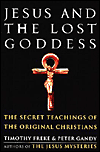 |
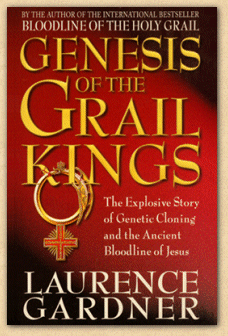 |
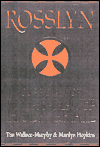 |
 |
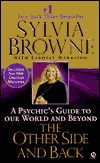
|

|
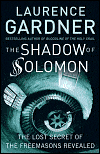
|
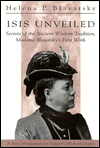 |
 |
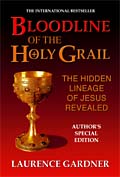 |

|
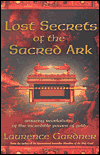 |
Search this site
Our search Engine does not search for the links in this site, only words in the text.
NO PART OF THIS SITE MAY BE COPIED OR REPRODUCED, IN WHOLE OR IN PART WITHOUT THE EXPRESS WRITTEN APPROVAL OF THE WEBMASTER..©. COPYRIGHT 1999 - 2007C.I.C. ALL RIGHTS RESERVED
This page has been Times since August 27th, 1999